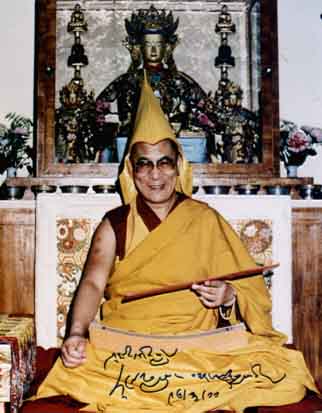Denise M. Simone
Susan E. Wagner High School English Department
A Literary View of Himalayan Women Through Religious and Cultural Texts
Modern Tibet
%20of%20Copy%20of%20flag.gif)

There are many changes in modern Tibet. Under Communist Chinese control,Tibetans struggle to maintain their traditions, religions and lifestyles. Many Tibetans have fled to Northern India and Nepal. The current Dali Lama, thereligious leader of Tibet, lives in exile as well. He tours the world spreading his Tibetan Buddhist philosophy of peace and love and the need for a free Tibet.
Many modern Tibetan authors write of the struggle between the old ways and the new. Here we have an autobiography of one such struggle. He speaks of his mother's life in 20th Century Tibet. From this excerpt from The Autobiography of Tashi Tsering: The Struggle for Modern Tibet, by Melvin Goldstein, William Siebenschuh and Tashi Tsering, M.E. Sharp Press, 1997, we learn of the Tibetan practice of polyandry. In this practice, a woman must marry two brothers.
Let's examine this practice from the son of a polyandrous marriage.
As you read, complete your double-entry journal and note your observations and reactions.
- Compare this marriage practice to the marriage practice of the Himalayan herders.
- What are the disadvantages polyandry poses for the woman involved?
- Why does the family of the men benefit?
- What problems might arise from such marriage practices?
The lives of modern Tibetan women are changing for both the better and worse. Lifein exile is often harder than before. Under communist rule, some women enjoy more opportunities. Explore these sites to learn more about women in modern Tibet.
Click here for The Tibetan Woman's Homepage

- Examine this photograph of modern women living in Tibet today under Communist rule.
- How do you think their lives fare?
- It is said that "Tibetan women hold up half the sky." How might this apply to modern Tibet?
This site was created by .... at the NEH Summer Institute "Cultures and Religions of the Himalayan Region," held at the College of the Holy Cross, Summer 2004